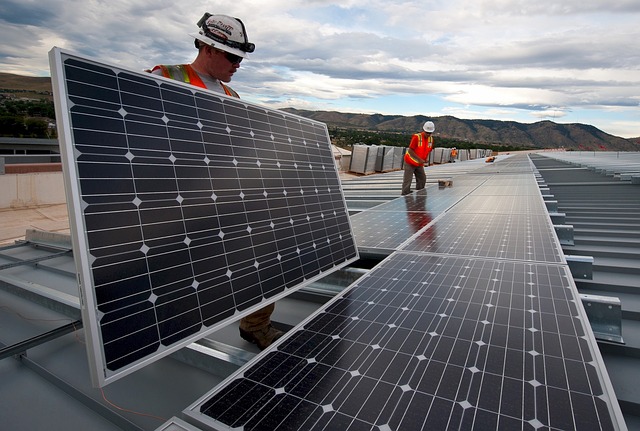Researchers in two separate studies have developed methods to fabricate perovskite-silicon tandem solar cells with power conversion efficiencies exceeding 30%, pushing past the traditional limits of silicon-based photovoltaics. One study achieved efficiency by optimizing perovskite deposition on a silicon base using phosphonic acid additives, while the other used ionic liquid to improve charge extraction, resulting in efficiencies of 31.2% and 32.5% respectively.
In two separate studies, scientists present novel methods that enable the fabrication of high-performance perovskite-silicon tandem solar cells with power conversion efficiencies exceeding 30%. Silicon solar cells, which represent the most widespread photovoltaic (PV) technology, are quickly nearing their theoretical maximum power conversion efficiency (PCE) of 29%.
One way to increase the efficiency of a solar cell is to optimize the spectrum of sunlight for conversion into energy. This can be done by stacking two or more interconnected photoactive materials into a singular device, improving the harvesting of solar energy. Combining perovskite and silicon solar cells into a tandem device could provide a promising path toward high-performance PVs.
Here, in two separate studies, researchers present different strategies for developing perovskite-silicon tandem solar cells with a PCE exceeding 30%.
“Overcoming this threshold provides confidence that high-performance, low-cost PVs can be brought to the market,” writes Stefaan De Wolf and Erkan Aydin in a related Perspective.
In one study, Xin Yu Chin and colleagues show that the uniform deposition of the perovskite top cell on a silicon bottom cell featuring micrometric pyramids – the industry standard configuration – can facilitate high photocurrents in tandem solar cells.
Chin et al. demonstrate that using phosphonic acid additives during the processing sequence of the cells not only improved the perovskite crystallization process, but also helped to alleviate recombination losses. In a proof-of-concept, the authors fabricated a device with an active area of 1.17 square centimeters that achieved a certified PCE of 31.2%.
Taking a different approach, Silvia Mariotti and colleagues show that using an ionic liquid – piperazinium iodide – improved band alignment and enhanced charge extraction at the interface of a trihalide perovskite and the electron-transport layer by creating a positive dipole. Using this modification, Mariotti et al. developed a perovskite-silicon tandem solar cell that demonstrated an impressive open circuit voltage of up to 2.0 volts and a certified PCE of up to 32.5%.
References: “Interface passivation for 31.25%-efficient perovskite/silicon tandem solar cells” by Xin Yu Chin, Deniz Turkay, Julian A. Steele, Saba Tabean, Santhana Eswara, Mounir Mensi, Peter Fiala, Christian M. Wolff, Adriana Paracchino, Kerem Artuk, Daniel Jacobs, Quentin Guesnay, Florent Sahli, Ga?lle Andreatta, Mathieu Boccard, Quentin Jeangros and Christophe Ballif, 6 July 2023, Science.
DOI: 10.1126/science.adg0091
“Interface engineering for high-performance, triple-halide perovskite–silicon tandem solar cells” by Silvia Mariotti, Eike K?hnen, Florian Scheler, Kári Sveinbj?rnsson, Lea Zimmermann, Manuel Piot, Fengjiu Yang, Bor Li, Jonathan Warby, Artem Musiienko, Dorothee Menzel, Felix Lang, Sebastian Ke?ler, Igal Levine, Daniele Mantione, Amran Al-Ashouri, Marlene S. H?rtel, Ke Xu, Alexandros Cruz, Jona Kurpiers, Philipp Wagner, Hans K?bler, Jinzhao Li, Artiom Magomedov, David Mecerreyes, Eva Unger, Antonio Abate, Martin Stolterfoht, Bernd Stannowski, Rutger Schlatmann, Lars Korte and Steve Albrecht, 6 July 2023, Science.






